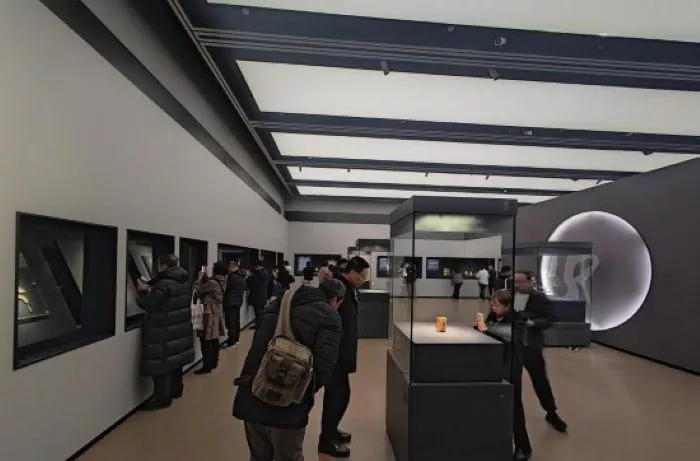A special exhibition at Liangzhu Museum showcases the remarkable evolution of jade craftsmanship during the Han Dynasty (206 BCE-220 CE), highlighting how the widespread use of iron tools revolutionized jade working techniques. The display examines jade’s sacred role in imperial seals, burial rituals, religious ceremonies, and aristocratic attire, demonstrating its enduring cultural significance.
“Han Dynasty jade artifacts represent both the continuation of ancient traditions and bold technical innovations,” explained Professor Xu Tianjin, director of Liangzhu Museum. “The period witnessed transformative developments in material selection, artifact categories, artistic forms, and decorative patterns that defined a new era in Chinese jade art.”
“Blessing to Descendants” Jade Bi Reflects Han Beliefs
Among the exhibition’s highlights is a rare inscribed jade bi (ceremonial disc) from Yangzhou Museum bearing the characters “Yi Zi Sun” (宜子孙) – a common Han blessing meaning “May descendants prosper.” This exquisite piece exemplifies how jade objects served as vessels for cultural values and philosophical concepts.
“The ‘Blessing to Descendants’ inscription offers us a window into Han dynasty worldviews,” Professor Xu noted. “We encourage visitors to appreciate these artifacts through multiple lenses – as historical documents, archaeological finds, artistic masterpieces, and embodiments of ancient Chinese thought.”
The exhibition demonstrates how Han craftsmen, empowered by iron tools, achieved unprecedented precision in jade work while maintaining the material’s ritual importance dating back to Neolithic cultures like Liangzhu (3300-2300 BCE). Comparative displays reveal technical advances in piercing, carving, and polishing that enabled more elaborate designs.
Rlated Topic:
- Stormy Weather Brings Flood Risks and Travel Delays to South During Holiday
- China’s High-Speed Rail Surpasses Air Traffic on Beijing-Shanghai Route
- Brand USA Concludes 10th U.K. & Ireland Destination Immersion Program

